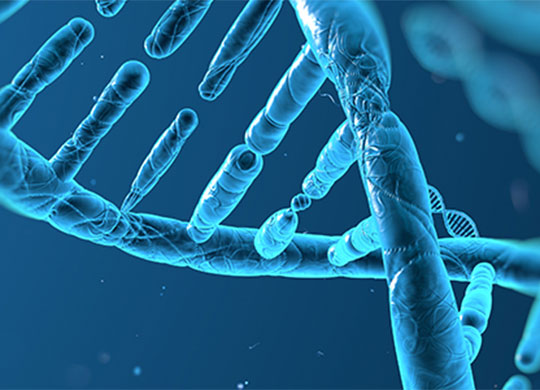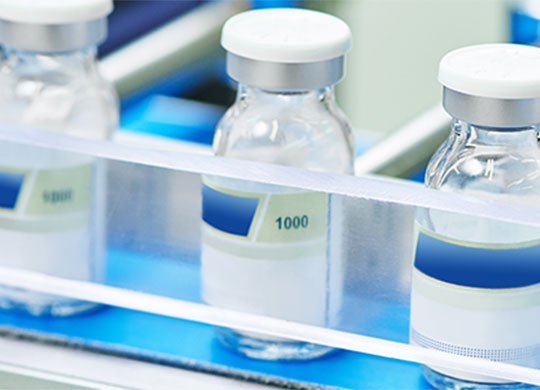
Avantor® Biopharma Educational Material
Learn all you need to know on biopharma, its R&D and manufacturing processes and technologies advancing patient treatments and therapies.
Learn about the use of biodegradable detergents in viral inactivation. Discover the procedures and significant benefits that can help elevate research standards.
Discover the step-by-step processes involved in gene therapy manufacturing, from designing therapeutic genes to optimizing manufacturing systems
Learn about viral contamination in biomanufacturing, including scientific techniques for detection and prevention. Read about the latest advancements to help protect your work from viruses.
Cell therapy manufacturing is growing and altering cells outside the body for custom drugs, restorative medicine and other therapeutic treatments.
Uncover the scientific nuances of viral monitoring and elimination in biopharmaceutical processes. Navigate through PCR, ELISA, and cutting-edge strategies for viral clearance.
Learn about the mechanisms underlying successful gene and cell therapies with our detailed exploration of delivery techniques, safety considerations, combination approaches, clinical outcomes, emerging technologies and beyond.
Laboratory software is important in boosting effectiveness and accuracy in scientific research.
Discover the various types & techniques of environmental control in biopharma research & manufacturing. Learn how clean room technology, HVAC systems and monitoring play a crucial role in ensuring product integrity.
Buffer optimization strategies aim to balance inventory levels to minimize excess while meeting demand effectively. Learn more about buffer optimization strategies.
Explore the post-translational modifications and regulation techniques that shape the intricate machinery of translation in protein synthesis.
Learn about preparing buffer solutions with stepwise instructions and troubleshooting guidance. Enhance your experimental success by understanding the principles behind buffer capacity and pH control
Discover the immense therapeutic potential of monoclonal antibodies in cancer treatment, autoimmune diseases and infectious diseases.
Learn about the mechanisms underlying successful gene and cell therapies with our detailed exploration of delivery techniques, safety considerations, combination approaches, clinical outcomes, emerging technologies and beyond.
Protein expression refers to how proteins are synthesized, modified, and regulated in living organisms. Learn more about Protein Expression Systems in this overview.
Recombinant protein production is a fundamental technique in biotechnology and molecular biology that involves crafting proteins not typically found in an organism.
Discover the latest breakthroughs in mRNA therapeutics, including vaccine development, gene therapy and cancer immunotherapy. Explore the future prospects and challenges in this cutting-edge field.
Single-use systems have revolutionized biopharmaceutical manufacturing, offering numerous advantages over traditional stainless steel systems.
Vaccine manufacturing process entails cultivating the target pathogen, processing it into a safe form, and packaging it for distribution while adhering to rigorous quality standards.
Pharmaceutical manufacturing involves a crucial process known as liquid filtration, which aims to remove impurities and particles from liquids like water, buffers or solvents.
Explore the history of mRNA and how it developed into one of today’s most promising technologies.
Cell and gene therapy are closely related fields that use biological materials or substances to treat diseases.
Cell and gene therapy manufacturing and commercialization are advancing rapidly due to the potential to improve how we treat various diseases and the outcomes of those treatments.
Messenger RNA (mRNA) plays a critical role in gene expression, a process in which stored genetic information in DNA is used to create proteins.
The development of mRNA (Messenger Ribonucleic Acid) vaccine technology can be considered a medical breakthrough that has revolutionized science’s ability to develop measures to protect us from deadly diseases.
Laboratory inventory management is important to ensure the smooth operation of any research facility.
Clinical trials are important for evaluating the safety and effectiveness of drugs, medical devices and treatments.
Ribonucleic acid (RNA) plays a crucial role in protein synthesis. Protein synthesis occurs in two main stages: transcription and translation.
Protein purification is an important technique in biochemistry, molecular biology and biotechnology, as proteins play a vital role in various biological processes.
Upstream processing is an important stage in bioprocessing that involves preparing and manipulating biological materials before subjecting them to downstream processing.
Discover the monoclonal antibody productions and manufacturing processes from cell culture to purification, characterization and quality control.
Monoclonal antibodies (mAbs or Moabs) are a type of protein made in the lab. mAbs are used to treat diseases, including some kinds of cancer. Learn what monoclonal antibodies are and how they impact clinical applications.
Explore the science behind recombinant proteins — from what it is to the types of recombinant proteins — and learn how they are revolutionizing biotechnology and medicine.
Downstream processing is the part of a bioprocess in which the product from the upstream process is isolated, purified and separated.
Downstream processing is vital for efficient and cost-effective production of biopharmaceuticals, industrial enzymes and other bio-based products.
Learn how to optimize your lab’s chemical stockroom with these expert tips on chemical inventory management for your lab.
Single-use technology in cell and gene therapies reduces the risk of contamination and ensures product integrity, providing a cost-effective and flexible manufacturing approach.
Protein aggregation is the abnormal accumulation of misfolded proteins into clumps, often associated with neurodegenerative diseases. Learn more about protein aggregation.
Uncover the significance of effective buffer management in scientific studies. From selection to optimization, this article delves into the methods and outcomes of maintaining proper pH, stability and ionic strength for reliable experimental results.
The Role of Filtration in the Biopharmaceutical Industry isfor removing contaminants from liquids, gases and air. Learn the role of Filtration in the Biopharmaceutical Industry.
Explore a comparative analysis of traditional and new purification methods like affinity chromatography, SEC and IEC to identify the most suitable technique for your research needs.
Cleanrooms are the backbone of critical scientific research and industries such as pharmaceuticals, electronics and aerospace. In these fields, sterility, precision and safety are paramount.
Discover how single-use technology can revolutionize your downstream processing workflows. Find out how it maximizes efficiency, reduces costs and minimizes contamination risks.
Errors in protein synthesis can have consequences on genetic information, cellular function and organismal development.
Explore the world of cell culture media types and understand their significance in scientific studies. Find out about the composition, applications and optimization strategies for serum-based, serum-free and chemically defined media
Quality control in biopharma ensures adherence to stringent regulatory standards, ensuring the safety, purity, potency and consistency of biopharmaceutical products.
Final filtration is the last line of defense before the gene therapy product reaches patients. This step helps remove any remaining impurities, contaminants or particulates that might have persisted through previous processing steps.
Explore the intricate world of cGMP in biopharmaceuticals. We provide essential insights into the principles, techniques, challenges of adhering to cGMP.
Learn why cGMP is important in the initial stages of biopharmaceutical manufacturing and the impact noncompliance could have on your scale-up process, including delays or interruptions.



















































